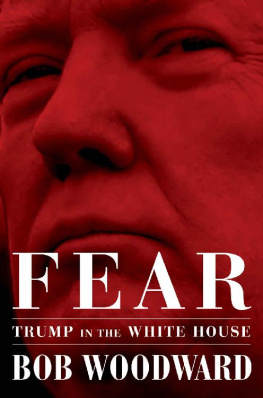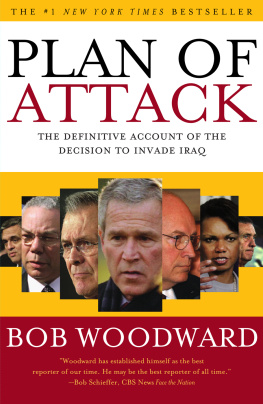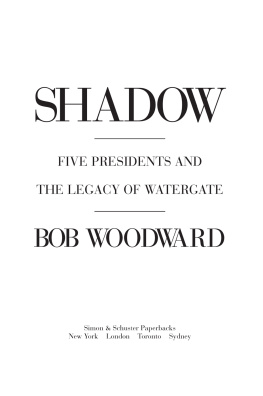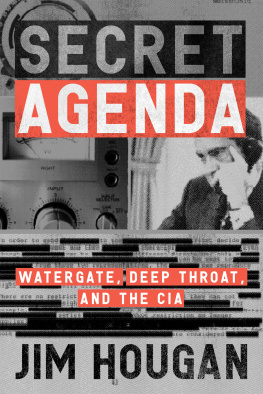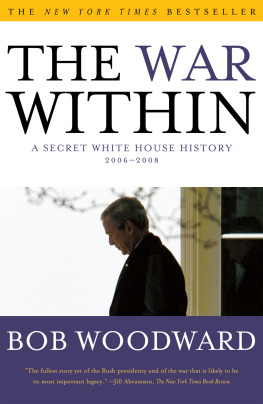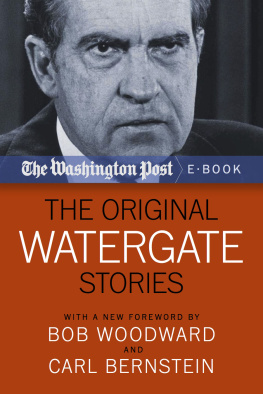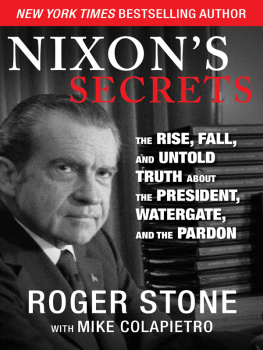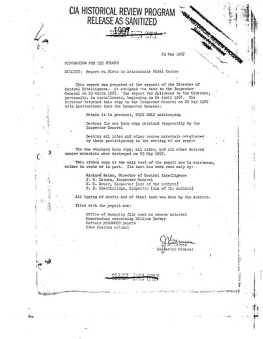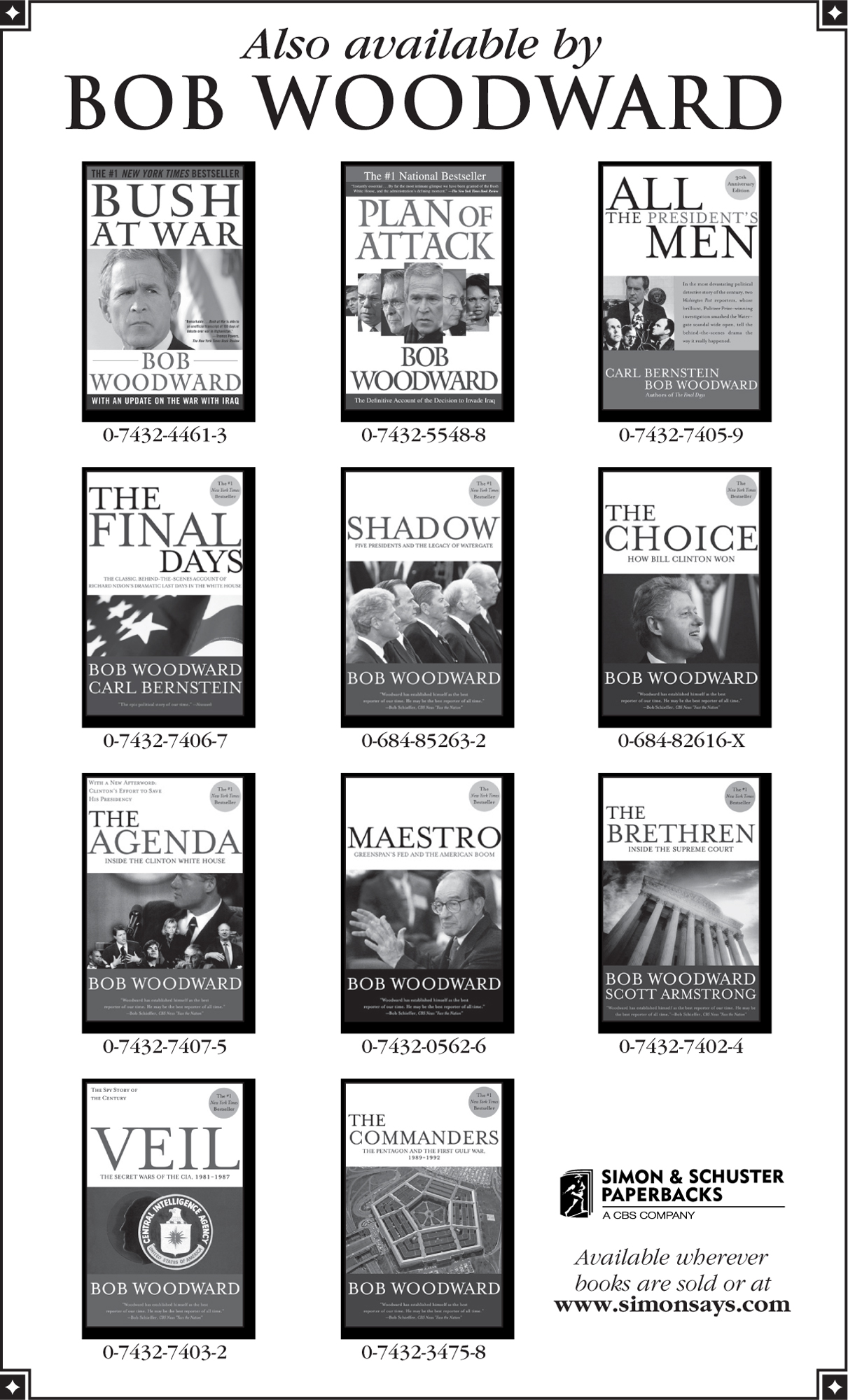Thank you for downloading this Simon & Schuster eBook.
Join our mailing list and get updates on new releases, deals, bonus content and other great books from Simon & Schuster.
C LICK H ERE T O S IGN U P
or visit us online to sign up at
eBookNews.SimonandSchuster.com
We hope you enjoyed reading this Simon & Schuster eBook.
Join our mailing list and get updates on new releases, deals, bonus content and other great books from Simon & Schuster.
C LICK H ERE T O S IGN U P
or visit us online to sign up at
eBookNews.SimonandSchuster.com
PRAISE FOR THE SECRET MAN
Fascinating... Revealing.
Bob Minzesheimer, USA Today
Compelling and highly readable.
Bill Emmott, The Washington Post Book World
The Secret Man is especially poignant and revealing when read in tandem with All the Presidents Men.... A remarkable saga.... A worthwhile coda.
Steve Weinberg, The Atlanta Journal-Constitution
An arresting book.... A thrilling flashback to a time of extraordinarily tenacious journalism.
Cal McCrystal, Independent on Sunday (London)
A stirring, sometimes even moving book, a lucid footnote to All the Presidents Men.... A ringing defense of the importance of confidential sources.
Mark Harris, Entertainment Weekly
A riveting story of corrupted power and excellent investigative journalism.... A fascinating glimpse into a troubled time in our nations past.
Julia Gambill Ledyard, The Tennessean
An insiders glimpse into a slice of history thats still sending echoes into the political universe.
George Meyer, Tampa Tribune
Also by Bob Woodward
P LAN OF A TTACK
B USH AT W AR
M AESTRO : G REENSPAN S F ED AND THE A MERICAN B OOM
S HADOW : F IVE P RESIDENTS AND THE L EGACY OF W ATERGATE
T HE C HOICE
T HE A GENDA : I NSIDE THE C LINTON W HITE H OUSE
T HE C OMMANDERS
V EIL : T HE S ECRET W ARS OF THE CIA 19811987
W IRED : T HE S HORT L IFE AND F AST T IMES OF J OHN B ELUSHI
T HE B RETHREN (with Scott Armstrong)
T HE F INAL D AYS (with Carl Bernstein)
A LL THE P RESIDENTS M EN (with Carl Bernstein)
Contents

Simon & Schuster Paperbacks
Rockefeller Center
1230 Avenue of the Americas
New York, NY 10020
www.SimonandSchuster.com
Copyright 2005 by Bob Woodward
A Reporters Assessment copyright 2005 by Carl Bernstein
All rights reserved, including the right of reproduction in whole or in part in any form.
First Simon & Schuster paperback edition 2006
S IMON & S CHUSTER P APERBACKS and colophon are registered trademarks of Simon & Schuster, Inc.
For information regarding special discounts for bulk purchases, please contact Simon & Schuster Special Sales at 1-800-456-6798 or
Designed by C. Linda Dingler
ISBN-13: 978-0-7432-8715-9
ISBN-10: 0-7432-8715-0
ISBN-13: 978-0-7432-8716-6 (Pbk)
ISBN-10: 0-7432-8716-9 (Pbk)
ISBN-13: 978-0-7432-8928-3 (eBook)
To
Katharine Graham, Ben Bradlee,
and Alice Mayhew
I N FEBRUARY 1992, AS THE 20 TH Anniversary of the Watergate break-in approached, I went to the fortress-like J. Edgar Hoover FBI headquarters building on Pennsylvania Avenue in Washington. An imposing cement structure with large dark windows, the Hoover building sits appropriately about midway between the White House and the Capitol. It is as if Hoover, the founding director and the embodiment of the FBI from 1924 to 1972, is still present in Washington, D.C., playing off presidents against the Congress. I navigated the labyrinth of security and finally made my way to the documents room. I had come to examine some of the FBIs investigative Watergate files that had been opened to the public. Private cubicles are available in the classy, law-firm atmosphere, well lit, all done in high-quality wood paneling well above the standard government issue. The room is quiet. I was offered blue-lined paper to take notes.
The Watergate files contain hundreds of internal FBI memos, requests for action, investigative summaries, and Teletypes to headquarters from field offices which had conducted hundreds of interviews. There were the first summaries of information on the five burglars arrested in the Democrats Watergate office building headquarters: their names, their backgrounds, their CIA connections, and their contacts with E. Howard Hunt Jr., the former CIA operative and White House consultant, and G. Gordon Liddy, the former FBI agent. The files teemed with notes, routing slips and queries bearing initials from senior Bureau officials, dates and intelligence classifications.
The outline of the Watergate cover-up was so clear in retrospect. White House counsel John W. Dean III, who later confessed to leading the illegal obstruction of justice on behalf of President Richard Nixon, stated all requests for investigation by FBI at White House must be cleared through him, according to a summary dated six days after the June 17, 1972, break-in.
A memo on October 10, 1972, addressed The Washington Post story that Carl Bernstein and I had written that day. It was probably our most important story; it reported that the Watergate break-in was not an isolated event but stemmed from a massive campaign of political spying and sabotage run by the White House and President Nixons reelection committee. The two-page memo stated that the FBI had learned that Donald H. Segretti, who headed the efforts to harass Democratic presidential candidates, had been hired by Dwight L. Chapin, the presidents appointments secretary, and paid by Herbert W. Kalmbach, the presidents personal lawyer. Because there was no direct connection to the Watergate bugging, the memo said, the FBI had not pursued the matter.
I smiled. Here were two of the reasons the Watergate cover-up had worked at first: Deans effectiveness in squelching further inquiry; and the seeming utter lack of imagination on the part of the FBI.
All of this was a pleasant, long, well-documented reminder of names, events and emotions as I sifted through the Bureau memos, as best I could tell almost a complete set of internal memos and investigative files. The files and memos provided a kind of intimacy with what had been four intense years of my life, as Carl Bernstein and I covered the story for The Washington Post and wrote two books about Watergate: All the Presidents Men, published in 1974, which was about our newspapers investigation; and The Final Days, published in 1976, which chronicled the collapse of the Nixon presidency.
At the time of my visit I was 48 years old, but I was not there for a trip down memory lane. I was not hunting for more information in the rich history of Watergate; not looking for new avenues, leads, surprises, contradictions, unrevealed crimes or hidden meaning, although the amazements of Watergate rarely ceased.
Instead, I was really there in further pursuit of Deep Throatthe celebrated, secret anonymous source who had helped direct our Watergate coverage during late-night meetings in an underground parking garage. The Post s managing editor, Howard Simons, had dubbed the source Deep Throat, after the pornographic movie of the time, because the interviews were technically on deep backgrounda journalistic term meaning that the information can be used but no source of any kind would be identified in the newspaper.
Only six people knew Deep Throats identity besides Deep Throat himself: me, Carl, my wife Elsa Walsh, former Post executive editor Benjamin C. Bradlee and later his successor, Leonard Downie Jr., and a Justice Department lawyer who discovered the secret in 1976. More on that later.


